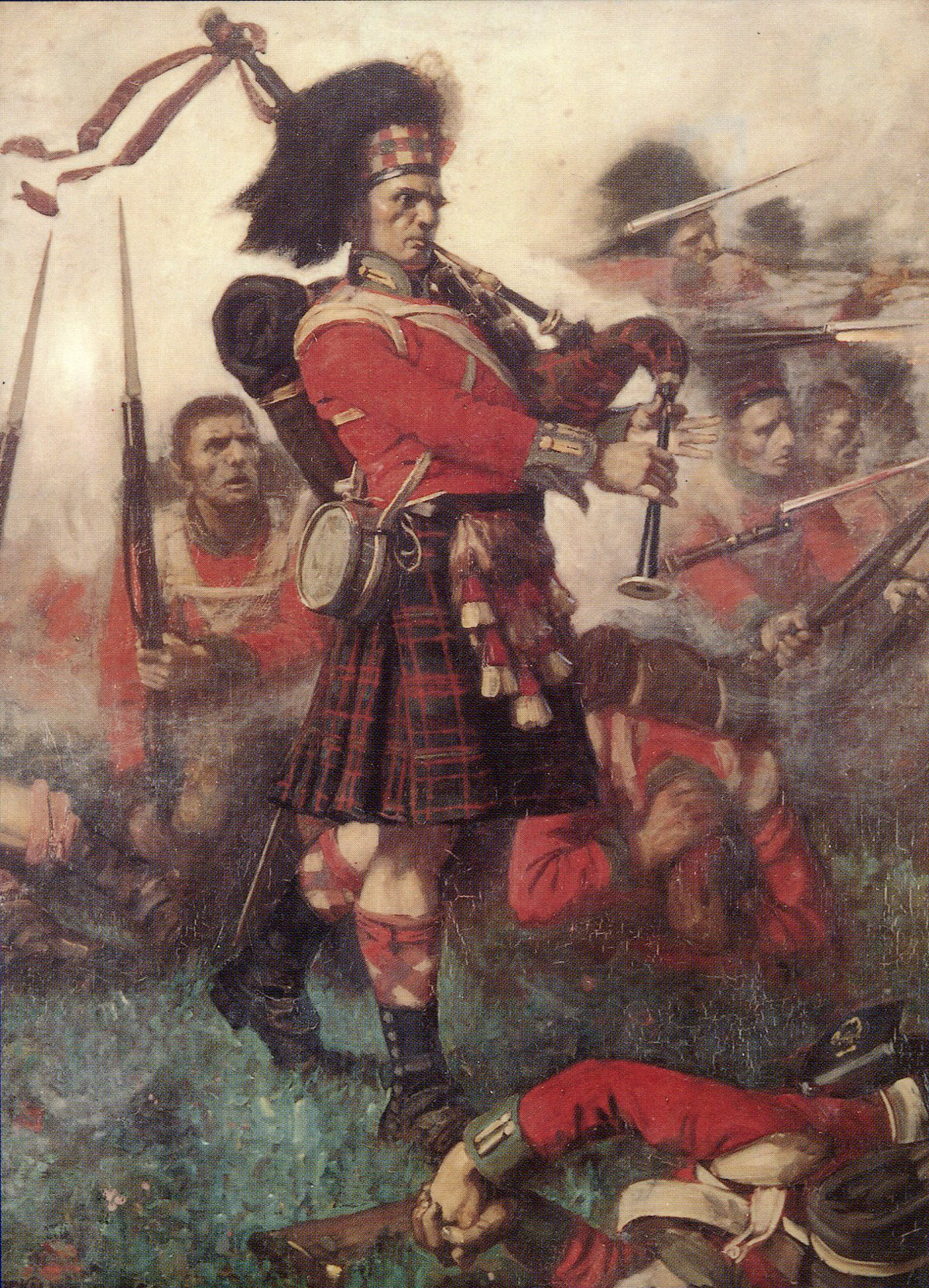Feather bonnet on:
[Wikipedia]
[Google]
[Amazon]
 The feather bonnet is a type of
The feather bonnet is a type of
 The feather bonnet began with the knitted blue bonnet with a chequered border. This was propped up and worn with a tall
The feather bonnet began with the knitted blue bonnet with a chequered border. This was propped up and worn with a tall

 The feather bonnet is a type of
The feather bonnet is a type of military
A military, also known collectively as armed forces, is a heavily armed, highly organized force primarily intended for warfare. It is typically authorized and maintained by a sovereign state, with its members identifiable by their distinct ...
headdress
Headgear, headwear, or headdress is the name given to any element of clothing which is worn on one's head, including hats, helmets, turbans and many other types. Headgear is worn for many purposes, including protection against the elements, d ...
used mainly by the Scottish Highland
The Highlands ( sco, the Hielands; gd, a’ Ghàidhealtachd , 'the place of the Gaels') is a historical region of Scotland. Culturally, the Highlands and the Lowlands diverged from the Late Middle Ages into the modern period, when Lowland S ...
infantry
Infantry is a military specialization which engages in ground combat on foot. Infantry generally consists of light infantry, mountain infantry, motorized infantry & mechanized infantry, airborne infantry, air assault infantry, and mar ...
regiment
A regiment is a military unit. Its role and size varies markedly, depending on the country, service and/or a specialisation.
In Medieval Europe, the term "regiment" denoted any large body of front-line soldiers, recruited or conscript ...
s of the British Army
The British Army is the principal land warfare force of the United Kingdom, a part of the British Armed Forces along with the Royal Navy and the Royal Air Force. , the British Army comprises 79,380 regular full-time personnel, 4,090 Gurk ...
from about 1763 until the outbreak of World War I. It is now mostly worn by pipers and drummers in various bands throughout the world. It is also worn in a similar fashion by regiments in various Commonwealth armies.
History
 The feather bonnet began with the knitted blue bonnet with a chequered border. This was propped up and worn with a tall
The feather bonnet began with the knitted blue bonnet with a chequered border. This was propped up and worn with a tall hackle
The hackle is a clipped plume or short spray of coloured feathers that is attached to a military headdress, with different colours being associated with particular regiments.
In the British Army and the armies of some Commonwealth countries, ...
. During the 17th and 18th century, the highlanders who wore this hat began to add ostrich feathers to decorate it. This decoration evolved into a full covering of the original bonnet. The ostrich feathers were then entwined into a lightweight cage, producing the height. The feather bonnet has one or more (usually 4 or 5) "tails" that hang down below the headband, and the regimental badge and hackle are displayed on the left.
There are parallels between the evolution of the Highland bonnet between 1760 and 1790 and the stationing of Highland regiments in North America in this period. The influence of the head-dresses of Native Americans on the bonnets of these troops is likely as contemporary pictures of Highlanders in Scotland do not show similar ornamentation with feathers, other than those of a few clan chiefs. On the return of the 42nd Foot
The 42nd (Royal Highland) Regiment of Foot was a Scottish infantry regiment in the British Army also known as the Black Watch. Originally titled Crawford's Highlanders or the Highland Regiment and numbered 43rd in the line, in 1748, on the disband ...
to Britain in 1790 an official report commented that ''"Their bonnets are entirely disfigured. They are so covered with lofty feathers that they appear like grenadier caps of black bearskin
A bearskin is a tall fur cap, usually worn as part of a ceremonial military uniform. Traditionally, the bearskin was the headgear of grenadiers, and remains in use by grenadier and guards regiments in various armies.
Bearskins should not be c ...
."''
Use
The feather bonnet has been used by all of the Scottish highland regiments at one point or another. Examples include theBlack Watch
The Black Watch, 3rd Battalion, Royal Regiment of Scotland (3 SCOTS) is an infantry battalion of the Royal Regiment of Scotland. The regiment was created as part of the Childers Reforms in 1881, when the 42nd (Royal Highland) Regime ...
(red Hackle) and the Seaforth Highlanders, Gordon Highlanders
Gordon may refer to:
People
* Gordon (given name), a masculine given name, including list of persons and fictional characters
* Gordon (surname), the surname
* Gordon (slave), escaped to a Union Army camp during the U.S. Civil War
* Clan Gord ...
, Queen's Own Cameron Highlanders
The Queen's Own Cameron Highlanders or 79th (The Queen's Own Cameron Highlanders) Regiment of Foot was a line infantry regiment of the British Army, raised in 1793. It amalgamated with the Seaforth Highlanders (Ross-shire Buffs, The Duke of Al ...
and Argyll and Sutherland Highlanders (all with white hackles).
Despite its elaborate appearance, the feather bonnet is a highly practical piece of military gear, as it is lightweight and the internal cage offers protection from blows. William Gordon-Alexander, an officer of the Sutherland Highlanders who served in India in the 1850s, after describing how a tulwar-cut to the head of a fellow officer had been averted by the wire frame of his feather bonnet, said: "Burroughs' feather bonnet saved his life from this sword-cut, as many of our lives were saved by it, in the succeeding hot-weather campaign, from the sun", immediately quoting an 1884 pamphlet by Lord Archibald Campbell in defence of the feather bonnet as being:

References
External links
{{DEFAULTSORT:Feather Bonnet Hats Scottish clothing Military uniforms Bonnets (headgear) Military of Scotland